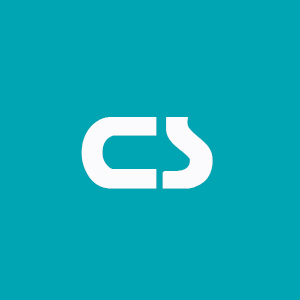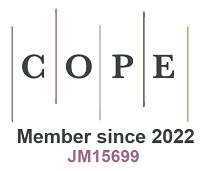2024 Annual Report of Chemical Synthesis
The year 2024 represents a significant milestone for Chemical Synthesis (CS, ISSN: 2769-5247), highlighting its remarkable achievements and expanding influence. This success is a testament to the invaluable contributions of the editorial team, authors, reviewers, conference participants, readers, and editorial board. Their collective efforts have propelled CS to new heights in 2024, attracting considerable attention from professionals and scholars in the field.
Since its inception in November 2021, the journal has published 163 high-quality papers and launched 27 Special Issues. These publications have been read 188,815 times and downloaded 83,570 times, underscoring CS’s growing impact and recognition within the global chemical community.
As we reflect on these accomplishments, the CS Editorial Office is pleased to present the journal’s progress in 2024 through five key dimensions, reaffirming its commitment to advancing research and innovation in the field.
1. Submissions in 2024
In 2024, CS received 213 submissions, marking a remarkable 173.08% increase compared to 2023. From 2022 to 2024, the journal demonstrated an impressive cumulative growth rate of approximately 363.04%. Notably, 67% of contributing authors had an H-index exceeding 40, 37% had an H-index greater than 60, and 13% surpassed an H-index of 100. Numerous academicians have published outstanding articles in CS, reflecting the high caliber of researchers contributing to the journal.

Figure 1. Number of Submissions and Publications to Chemical Synthesis (2021-2024)

Figure 2. Collaboration in Publications with Academicians
2. Published Articles in 2024
In 2024, CS published four issues featuring a total of 80 articles, including 18 Reviews, 34 Research Articles, 6 Mini-Reviews, 4 Research Highlights, 2 Perspectives, and other article types. Notably, Reviews and Research Articles accounted for 80% of the total publications, as illustrated in Figure 3. Figure 4 showcases the covers of the eight published issues from 2024.
These articles span a wide range of cutting-edge topics in chemistry, including photocatalysis, electrocatalysis, thermal catalysis, battery technology, metal-organic frameworks (MOFs), carbon dioxide utilization, asymmetric catalysis, supramolecular self-assembly, single-atom catalysis, green organic synthesis, fluorescence detection, and water electrolysis for hydrogen production.
A significant number of the papers published in CS in 2024 were authored by researchers from top-ranked institutions globally, including the National University of Singapore, Nanyang Technological University, the Chinese Academy of Sciences, the University of Science and Technology of China, Zhejiang University, Jilin University, Tianjin University, Nankai University, Beijing University of Chemical Technology, Xiamen University, Fudan University, and others.

Figure 3. Distribution of Published Articles in 2024 (by Percentage)

Figure 4. Issue Covers Published in 2024
Since its launch in 2021, the proportion of Reviews and Research Articles published in the journal has steadily increased, as shown in Figure 5. This trend highlights the continuous improvement in the quality and depth of the journal's content.

Figure 5. Proportion of Review, OA, and Short Paper (2021-2024)
3. Editorial Board Member
3.1 Newly Promoted Editorial Board Member
In October 2024, Professors Jinguang Hu, Damien P. Debecker, Teng Ben, and Xiaoxin Zou were appointed Section Editors of CS. They will oversee editorial work in the fields of sustainable energy materials, green chemistry, and materials chemistry, respectively.

Table 1. List of Promoted Section Editors
3.2 The Second Editorial Board Meeting in 2024
In August 2024, the Second Editorial Board Meeting of CS was successfully held in Shenyang, China, as depicted in Figure 6. Expertly chaired by Editor-in-Chief Professor Bao-Lian Su, the meeting convened 18 Editorial Board members and 5 distinguished representatives from the Editorial Office. Additionally, Mr. Min Fan, CEO of OAE Publishing Inc., was in attendance. This in-person meeting played a pivotal role in fostering deeper mutual understanding and collaboration among participants while strategically charting the future development direction of CS.

Figure 6. The Second Editorial Board Meeting of Chemical Synthesis in August 2024
4. Highlight Contents
4.1 Special Issues
In 2024, CS published 27 Special Issues, led by 54 esteemed Guest Editors, including academicians, recipients of the National Distinguished Young Scholar Award and National Excellent Young Scholars, as well as research group leaders and project heads. These Special Issues covered six key areas: catalysis and materials, energy conversion and storage, photocatalysis and electrocatalysis, porous and functional materials, green and sustainable chemistry, and specialized topics such as AI for Chemistry.

Figure 7. Special Issues Launched in 2024
4.2 Conference
In 2024, CS hosted one offline Frontier Cross Forum in Shenyang and organized four offline seminars at the University of Science and Technology of China, Beijing University of Chemical Technology, East China Normal University, and Nanjing University. Additionally, the journal supported three offline meetings and sponsored the Dalian Youth Catalytic Meeting. These events collectively attracted the participation of 19 academicians and 185 National Outstanding Youth and National Excellent Young Scholars, fostering academic exchange and collaboration.

Figure 8. A Portion of the Participating Academicians

Figure 9. The Second Chemical Synthesis Frontier Cross Academic Forum in Shenyang, August 2024

Figure 10. Chemical Synthesis Energy Electrochemical Catalysis Symposium in Hefei, May 2024

Figure 11. International Symposium on the Frontiers of Sustainable Energy Materials in Shanghai, May 2024

Figure 12. International Symposium on the Efficient Utilization of Chemical Resources in Beijing, June 2024

Figure 13. Chemical Synthesis Namur Green Chemistry Workshop in Namur, July 2024

Figure 14. Supramolecular Assembly and Functional Materials Forum in Shanghai, September 2024

Figure 15. Chemical Synthesis Nanjing University Special Showcase in Nanjing, November 2024
5. Citations
5.1 Highly Cited Articles in 2024
| Title | Corresponding author | Cited times |
| Nanostructured intermetallics: from rational synthesis to energy electrocatalysis | Prof. Xiaoxin Zou | 25 |
| Enantioselective synthesis of 3 - arylindole atropisomers via organocatalytic indolization of iminoquinones | Prof. Bin Tan | 21 |
| Organocatalytic Nazarov - type cyclization of 3 - alkynyl - 2 - indolylmethanols: construction of axially chiral cyclopenta[b]indole scaffolds | Prof.Feng Shi | 20 |
| Selective electroreduction of CO2 to C2+ products on cobalt decorated copper catalysts | Dr. Kun Zhao (Switzerland) Prof.Wen Luo | 19 |
| Recent advances in nonmetallic modulation of palladium - based electrocatalysts | Prof. Gengtao Fu | 19 |
| Energy - efficient anodic reactions for sustainable hydrogen production via water electrolysis | Prof. Yingtang Zhou | 16 |
Table 2. List of Highly Cited Articles in 2024
5.2 Citation Performance
In 2024, CS published a series of articles that attracted significant attention, widely shared and disseminated across various journals, further enhancing their impact and visibility within the scientific community.

Table 3. List of Citing Journals
In 2024, CS experienced remarkable growth, and we would like to express our sincere gratitude to everyone who has supported the journal. To our authors, we are deeply thankful for sharing your groundbreaking research with us—your work is the foundation of our publications. A heartfelt thank you to our dedicated reviewers for ensuring the high quality and rigor of our published research. We also extend our appreciation to our Editorial Board members for their invaluable guidance and vision, which shape the journal's direction and impact. Finally, we are grateful to our readers and collaborators for your continued engagement and feedback, which energize our academic community.
As we step into 2025, the journal remains committed to prioritizing quality, publishing exceptional articles, and striving to lead advancements in chemistry. CS will continue to serve as a platform for free, equitable, and rigorous academic exchange. We look forward to its continued growth and success, with an exciting future ahead!
Editor: Kangying Cao
Language Editor: Emma Chen
Production Editor: Ting Xu
Respectfully Submitted by the Editorial Office of Chemical Synthesis








